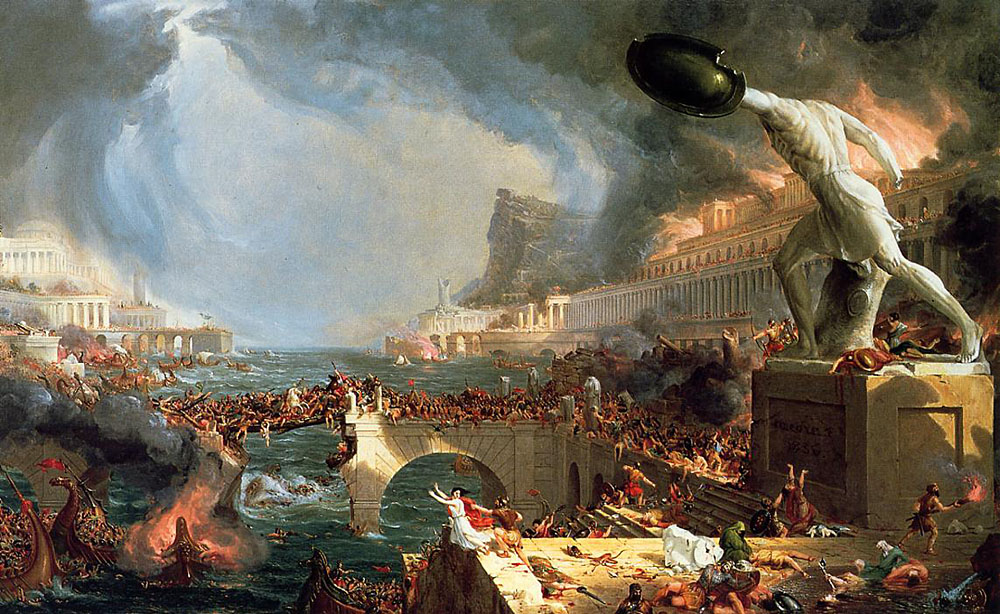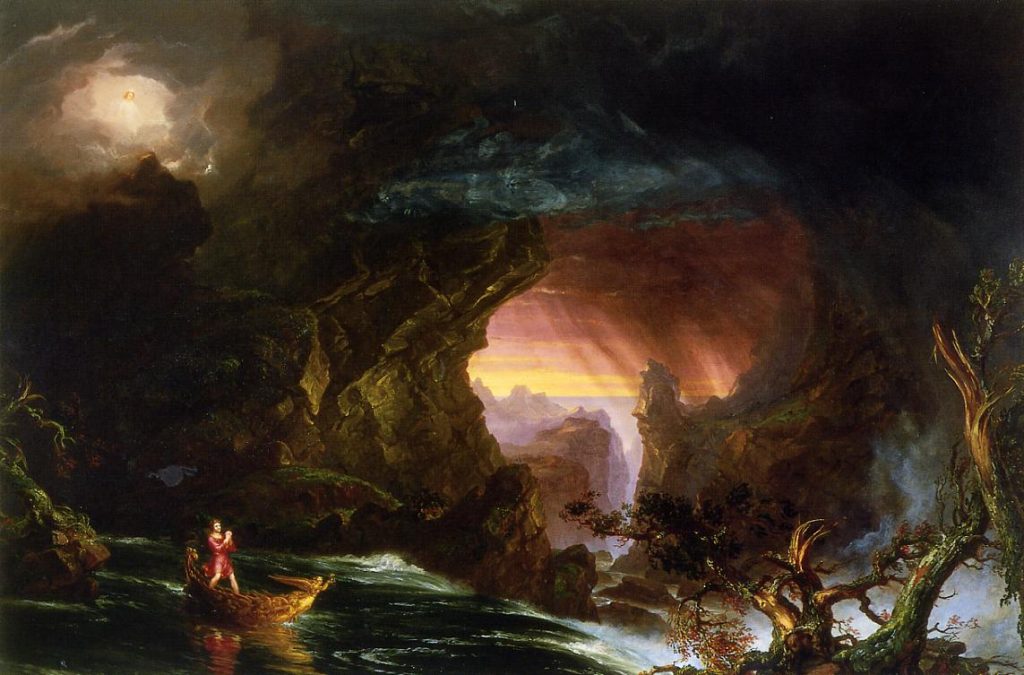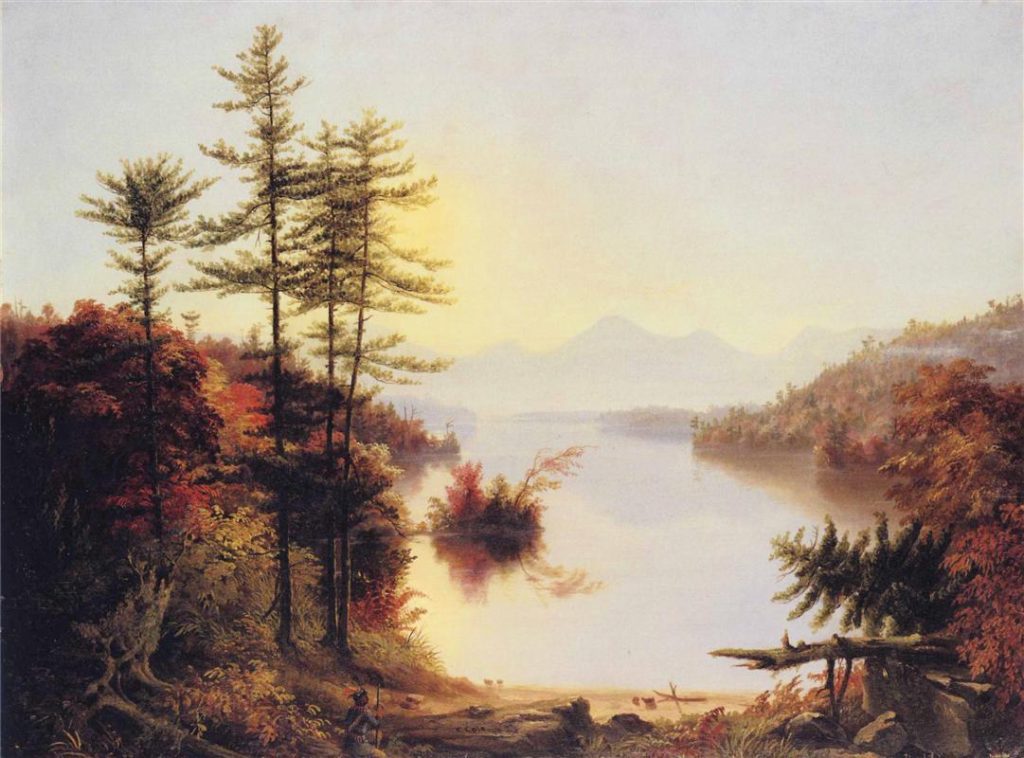American landscape painter Thomas Cole (1801–1848) was the driving force behind the Hudson River School, a prominent mid–19th-century art movement in the country. Cole is renowned for his meticulously rendered and romanticised landscapes, which frequently evoke awe and grandeur in the American wilderness. Born in England, Cole emigrated to the US in 1818 with his family. He started as an engraver but quickly switched to painting after being influenced by British and American landscape painters’ creations. His technique changed over time to highlight the untainted beauty of the American West, and he gained recognition for his ability to depict light, mood, and the majestic features of the natural world.
American conceptions of the landscape and its connection to national identity were greatly influenced by Cole’s work. During his lengthy travels around the northeastern United States, he painted landscapes of the Hudson River Valley, the Catskill Mountains, and other places. His interest in literature, philosophy, and history is shown in the symbolic motifs and narratives he frequently incorporated into his paintings. In addition to his creative accomplishments, Thomas Cole mentored younger artists and influenced the following generation of landscape painters, who significantly contributed to the advancement of American art. His contributions to comprehending and enjoying the American landscape are honoured in his legacy today.
Art and Life of Thomas Cole
A prominent figure in American art history, Thomas Cole is most recognised for his contributions to the Hudson River School, a group of landscape painters active in the middle of the 19th century. The Hudson River School was America’s first organised art school, and Cole is frequently recognised as its creator. This school of artists concentrated on romanticised portrayals of the wildness and majesty of the American landscape. Cole’s paintings had a significant influence on how Americans saw the countryside. He frequently depicted vast stretches of wilderness, stunning scenery, and a beautiful representation of nature that evoked reverence and awe.

Cole brought attention to the value of conservation and emphasized the beauty of the American environment in his paintings. His artwork influenced early conservation initiatives and the creation of national parks. A sense of national identity was fostered among Americans during the period of fast development and industrialization by Cole’s romanticized landscapes. His paintings fostered a rising pride in the American environment by showcasing the country’s distinctive landscapes. Cole’s technique and attitude to landscape painting impacted generations of American artists even after he lost direct influence—his focus on the sublime and the natural world’s beauty inspired later American art groups.
The Course of Empire
Thomas Cole painted five paintings titled “The Course of Empire” between 1833 and 1836. It is noteworthy in part because it captures the thoughts of the famous American culture when many believed that pastoralism represented the pinnacle of human civilization and that empire would eventually lead to gluttony and decadence. Cole often revisited the idea of cycles, as shown in his series The Voyage of Life. The Savage State, The Arcadian or Pastoral State, The Consummation of Empire, Destruction, and Desolation are the works that make up The Course of Empire.
In The Savage State, a few human figures are shown in a natural setting within a primitive landscape. It symbolizes the prehistory of human civilization when people coexisted peacefully with the environment and lacked sophisticated social institutions or technology. Cole depicts a more developed landscape in The Arcadian or Pastoral State, where agriculture and pastoral life are starting to take shape. It represents a pastoral ideal where people live blissfully in harmony with the natural world.

Human civilization reaches its zenith with The Consummation of Empire. It shows a thriving metropolis with impressive architecture, cutting-edge technology, and luxurious lives. It represents the pinnacle of success regarding wealth, power, and culture. Destruction, the fourth picture, depicts the empire in disarray and ruin. Devastation and destruction have resulted from war, strife, and moral rot. Chaos reigns, fires burn, and buildings are reduced to rubble, signifying the results of arrogance and unbridled ambition. A picture of deterioration and devastation is shown in the last artwork, devastation. The environment has been reclaimed by nature, leaving only ruins of the once-great civilization.
The Architectural Scenery of Thomas Cole
The relationship between Cole and architecture is essential to comprehending much of his work. It is undeniable that Cole met both Constable and Turner, who are widely acknowledged as two of his primary influencers. Cole’s structures, even in ruins, do not blend into the surroundings, in contrast to the artwork of these artists. Cole’s approach is more akin to the works of Caspar David Friedrich or John Martin than it is to Turner and Constable because of the stage-like effects of his lighting and the solid representation of his stonework. Cole should be viewed as an architectural painter because many of his “landscapes” have real or imagined buildings as their focal point. Indeed, he painted historic structures and ruins throughout his two travels in Europe in his teens and middle age.
In the 1830s, Cole worked as an architect, creating plans for several structures. His recently reconstructed self-designed studio in Catskill, New York, has received much attention. Although it is questionable if Cole himself would have considered this well-functioning but pleasant building to be “architecture,” it provides a charming contrast to the Ohio State Capitol and St. Luke’s Church Catskill, the only other structures that are known to have been built primarily by his plans. In addition, Cole created several drawings for his Catskill home and the Washington Monument, both of which were never built.

It has occasionally been observed that Cole listed himself as an architect in the New York Directory; however, it is still being determined if this was done to draw in more business or to give his work more respectability. The structures Cole depicts in his paintings represent more than just the taste in art of early nineteenth-century America.
Almost all of Cole’s depictions of a civilisation’s origin, development, and demise may be found in The Course of Empire, published in 1836 and likely his best-known work. The buildings depicted in this series of epic oil paintings adhere to the then-dominant art historical story of Laugier’s primitive hut, which makes sense given that the Fall of Man is essentially an old artistic motif applied to a classical landscape. From the primitive hut or Savage State, we move on to the Arcadian Scene, which depicts the architecture of primitive ancient Greece (albeit it is more akin to megalithic northern Europe). Finally, we see the birth and collapse of Imperial Rome.
Destruction is a very fitting title for the painting that shows the collapse of an empire. Cole’s portrayal of the collapse of Rome shows an empire facing sudden Armageddon, unlike the natural fall of Rome, which was more of a dilution. The sea boils, and the sky fills with smoke as barbarians overwhelm the port of his imagined city, causing its temples and bridges to collapse without human intervention.
Goya’s Black Paintings, The Darkest Painting Series in the World






